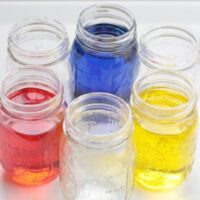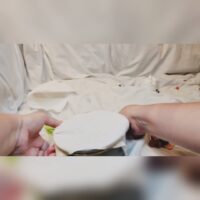I love STEM activities for elementary school, but when the school year is just starting, I really prefer to do as many no prep STEM challenges as possible because the first few weeks of school are so hectic! At the start of the year, I like to give every student, no matter what grade, a refresher on the scientific method. The penny paper towel experiment is one of my favorite ways to teach the scientific method because the variables produce such dramatically different results.
And if you add a few extra variations, your students could even turn this into a paper towel science project.
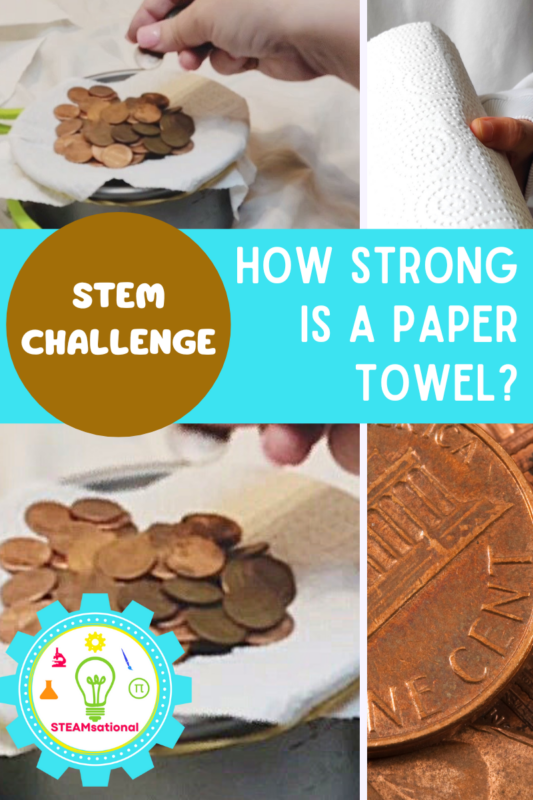
The scientific method is one of the most important lessons any child can learn in elementary school. The scientific method teaches children the steps to completing an effective science experiment.
The penny paper towel experiment is one of the easiest methods for how to teach the scientific method to kids, because to complete the paper towel strength test, children must make a hypothesis, test variables, and record results.
What Kids Learn Doing the Penny Paper Towel Experiment
The scientific method is an important thing for elementary kids to learn so they can set up experiments and STEM activities logically.
The scientific method includes the following:
- A question
- A hypothesis
- A test with variables
- Recording data
- And sometimes repeating the experiment with other variables
The penny paper towel experiment is a simple experiment that kids of all ages can do as they test whether a wet or dry paper towel can hold more pennies. Children can declare a hypothesis on which towel will be strongest, and then once completing the experiment, the students can record the data they discovered while doing the experiment.
Why are Dry Paper Towels Stronger than Wet Paper Towels?
Paper towels are made from trees like any other paper. Paper is made of cellulose fibers. The fibers are held together with hydrogen bonds.
However, when a paper towel gets wet, the hydrogen bonds in the cellulose fibers also bond with the hydrogen in the water, which makes the cellulose bonds weaker.
What You Need for the Penny Paper Towel Experiment
The nice thing about this paper towel strength experiment is that it takes almost no supplies and children can learn an important lesson about the scientific method and why testing variables are important in every science project or STEM experiment.
To complete this penny experiment you will need the following items:
- Paper towels (4-5 sheets per student group)
- Rubber bands (1 for each student group)
- Eye droppers or pipettes (1 per student group)
- Glass jars (1 per student group)
- STEM notebook
- Pencils
- Pennies (you can exchange cash for pennies at a bank if you don’t have enough for your entire class. Each student group will need about 200 pennies)
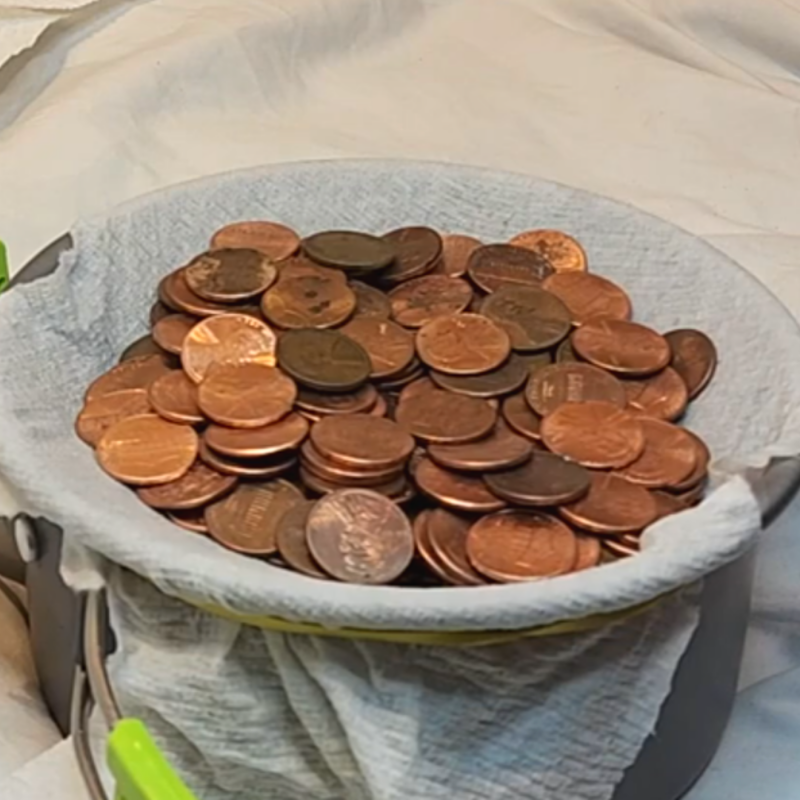
If you want to make science fair season a whole lot easier, check out the FREE science fair display board designer below.
Penny Paper Towel Experiment Lesson Plan
Setting up the experiment is easy. Discuss the properties of paper towels and what keeps the paper towels strong.
Next ask the kids to hypothesize how many pennies the dry and wet paper towels will be able to hold.
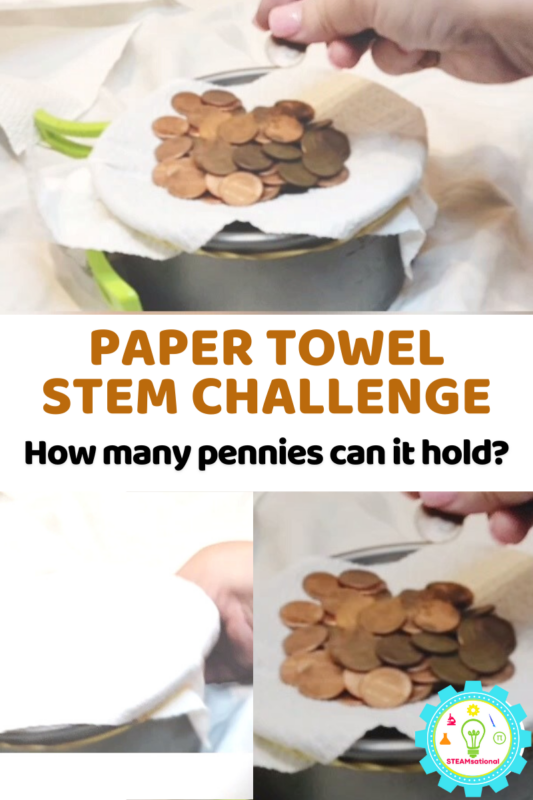
Give the students about 15 minutes to experiment with how many pennies it takes to break through the wet and dry paper towels and record the data in their STEM notebooks.
Finally, explain how variables like this are how scientists determine what is and isn’t true about the world.
More Super Simple Science Experiments
If you want to know what other science experiments you can do with materials you have in the classroom or lying around the house, then check out these other super simple science projects!
- Chemical Reactions! How to Turn a Penny Green Experiment
- No Prep STEM Challenges Perfect for the Classroom!
- Easy Science Bundle
- Cleaning Pennies Science Experiment
Get the step-by-step directions on how to do the penny paper towel experiment in the printable guide below!
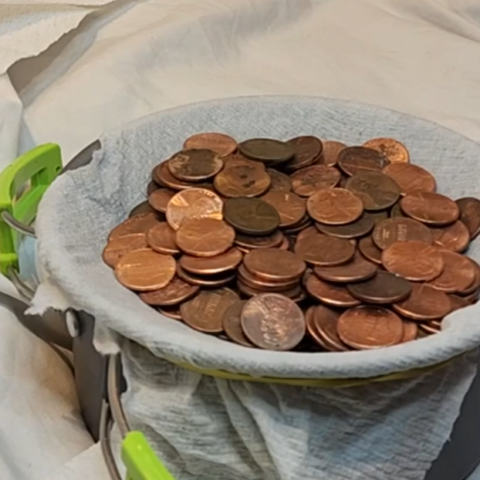
Paper Towel Strength Test Science Experiment
With just paper towels and pennies, students can conduct a simple penny paper towel experiment to determine whether wet or dry paper towels can hold more weight. Students will learn how adding a variable to an experiment can drastically change the outcome even when no other changes are made.
Materials
- Paper towels
- Glass cup or jar (1 per student group)
- Pennies
- Rubber bands
- Eye dropper
- Water
Tools
- STEM Notebook
- Pencils
Instructions
- Before starting the project, have the students predict whether the dry or wet paper towels will hold more pennies.
- Take the dry paper towel and secure it over the bowl using the rubber band. Make sure that it is secure and tight.
- Drop pennies on it one at a time until the dry paper towel breaks.

- Count how many pennies the dry paper towel could hold before breaking.
- Have the students record the results of their experiment in their STEM notebooks.
- Take the wet paper towel and carefully secure it over the bowl using the rubber band. It will rip much easier so exercise care. Make sure that it is secure and tight.
- Drop pennies on it one at a time until the wet paper towel breaks.

- Count how many pennies the wet paper towel could hold before breaking.
- Compare the number of pennies the dry paper towel held to the number of pennies that the wet paper towel held.

- Have the students record their observations in their STEM journals.
- What observations can you make about this experiment?
- What variables would you change?
Recommended Products
As an Amazon Associate and member of other affiliate programs, I earn from qualifying purchases.
What is your favorite way to introduce the scientific method to students?




